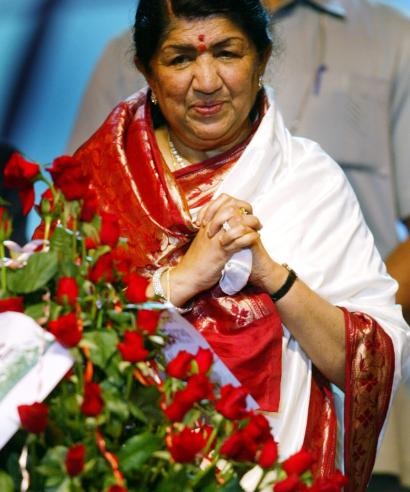Lata Mangeshkar, India’s Biggest Singing Icon, Is Dead
By Manavi Kapur

Lata Mangeshkar, India’s most popular female singer, died last week in Mumbai. She was 92.
The legendary singer, fondly called the “Nightingale of India”, among other names, was under treatment at the city’s Breach Candy Hospital and had been put on ventilator a day earlier. She had tested positive for covid-19 on Jan. 8.
India’s Road Transport and Highways Nitin Gadkari was one of the first to arrive at the hospital following her passing. He tweeted saying, “Lata didi will always remain an inspiration for all of us. May God give peace to her soul.”
Mangeshkar, who sang in multiple languages for over seven decades, leaves a colossal body of work. So much so that she is also called the voice of India. Her songs for generations of female Bollywood stars, however, will remain the centerpiece of her achievements.
The singer’s instantly recognizable voice has left millions of Bollywood music lovers, even beyond the borders of India, mesmerized. Former Pakistani prime minister Yousaf Raza Gilani was a self-confessed fan.
Born in 1929 in Indore and named Hema Hardikar, she and her younger siblings were trained in the Gwalior gharana (school of Hindustani classical music) by their father, Dinanath Mangeshkar. She was later renamed Lata after Latika, a character in Bhaan Bandhan, a play her father wrote.
From Indore, a teenaged Mangeshkar made her way to Bombay (now Mumbai), to never look back. She sang her first playback song, “Naachu Yaa Gade,” for the Marathi film Kiti Hasal in 1942—she was only 13 at the time. It was also the year that India’s freedom struggle was entering its last phase with the launch of the Quit India Movement against the British.
She announced her arrival in Bollywood with her first hit, “Aayega aanewala” (Mahal, 1949).
Mangeshkar’s shockingly feminine voice made an indelible mark on listeners till then used to an industry ruled by popular—and more boisterous—female singers such as Noor Jehan, Suraiya, and Shamshad Begum.
Her range and versatility gave legions of music composers to experiment with notes and scales till then deemed unattainable. A post-war boom in the film industry helped, too.
Over 75 years, Mangeshkar hardly met a match as she worked with most top music composers—from Anil Biswas in the 1940s and 1950s to AR Rahman post-1990s, with a variety of other greats thrown in the decades between.
She has sung for the top actor of every defining decade in Indian cinema’s history, right from Madhubala to Preity Zinta. From deeply devotional chants to ridiculously raunchy numbers, there is hardly any genre she has missed.
Her rendition of the patriotic “Ae mere watan ke logon” (Oh, people of my country) once moved prime minister Jawaharlal Nehru to tears. No Independence Day celebration in the country is complete without those haunting notes being played.
The hundreds of awards that she won or was conferred upon over the decades—not even the Bharat Ratna she received in 2001—may not fully reflect her glory. – BBC

